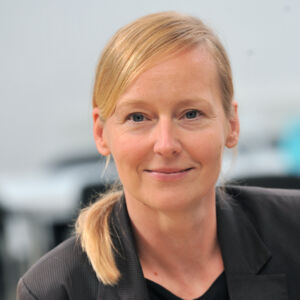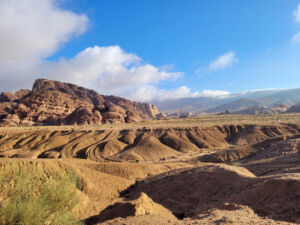When it comes to extreme weather events, the impact of climate change is increasingly visible. As a result, effects such as flash floods caused by heavy rainfall have become more prominent in public awareness: not least the disastrous Ahrtal floods has led to an awareness of the dangers of heavy rainfall even in Germany and municipalities are now looking for adaptation strategies. However, heavy rainfall events raise the same question worldwide: How can the population be better protected from flash floods? This is what an international research team from “CapTain Rain”, led by ISOE – Institute for Social-Ecological Research in Jordan, is investigating.
Jordan is particularly affected by extreme weather events. The country has seen many deaths and damages caused by flash floods in the last 50 years. Paradoxically, this Middle Eastern country also counts among the most arid ones in the world. So, on the one hand the question is, how can the population be better protected from damages caused by heavy rainfall, and on the other hand how can more water be obtained? The approach of the “CapTain Rain” (Capture and retain heavy rainfalls in Jordan) project is already present in its name: “capture” and “retain”.
The research project is looking for solutions to capture the water during heavy rainfall and then drain it away so that it can be reused. One prerequisite for this is that the existing methods and instruments for flash flood forecasting and risk management are improved. To this end, the researchers are investigating the interactions between land use, hydraulic engineering measures and climate change. Vulnerability analyses are also being carried out in order to specifically identify weak points. The knowledge thus gained can then be used to derive measures to protect the population.
Research contribution to the Sustainable Development Goals (SDG)
In December 2023, around 30 project partners and Jordanian experts met in the capital Amman to exchange current research findings and develop scenarios for integrated modeling and vulnerability analysis. The CapTain Rain research team also held additional meetings with project partners and stakeholders and organized an additional workshop in Wadi Musa. Here, the focus was on common planning goals for the Wadi Musa region and on suitable measures with the ability to reduce damages caused by flash floods in this area . Wadi Musa is home to the rock city of Petra, which has repeatedly had to be evacuated as a result of heavy rainfall. In 2018, twelve people lost their lives in the area of the flooded World Heritage Site.
The proposals developed as part of the CapTain Rain project should also enable the municipality of Wadi Musa to implement measures that not only focus on the protection against flash floods, but also on the utilization of rainwater. The Federal Ministry of Education and Research (BMBF) is funding the CapTain Rain project as part of the “CLIENT II – International Partnerships for Sustainable Innovation” funding measure. The CLIENT II website currently highlights the success of the joint project in terms of the United Nations Sustainable Development Goals (SDGs): In Jordan, CapTain Rain is particularly making a valuable contribution to SDG 13 “Climate Action”, but both SDG 6 regarding water and SDG 11 “Sustainable Cities and Communities” are also being implemented.
For more information on the project please go to
www.isoe.de/en/nc/research/projects/project/captain-rain
Scientific contact:
Dr. Katja Brinkmann
Tel. +49 69 707 6919-42
katja.brinkmann@isoe.de
www.isoe.de
Press contact:
Melanie Neugart
Tel. +49 69 707 6919-51
neugart@isoe.de
www.isoe.de
Contact:



